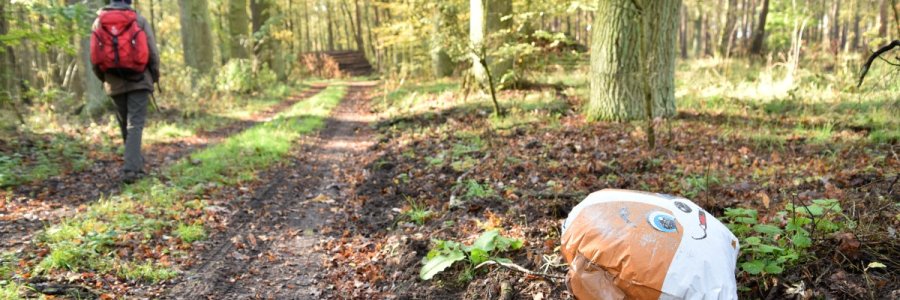An autumn hiking tour to the Hohe Rott near Nennhausen
By local train it is less than one hour from the city center of Berlin to the station of the village of Nennhausen. Going out and up onto the Hohe Rott (High Rott). Old and less known oaks and the solitude of the woods. Back to the village, castle and castle park with fallen mighty "Fouque oak". Then back to Berlin again by train. 11 km, four relaxing hours.
- We and the High Rott
- From the village up to the Hohe Rott
- The old oaks of the Hohe Rott
- A short look into the castle park
- Sources
We and the High Rott
Up onto the High Rott we went for the first time back in February 2005, a long hike back then as far as Stechow and its well-known old cemetary lime tree and back to Nennhausen. At that time also the mighty Fouque oak stood in the castle park of Nennhausen. Further times in March 2007 and last time in October 2009, also with information from the draft of the "Forstbotanische Merkbuch für die Provinz Brandenburg" (inventory of remarkable trees of the state Brandenburg" back in the year 1900.
After 10 years it was time to go back to the Hohe Rott and see how the oaks have developed, how their sizes have changed and whether they have all remained intact.
From the village up to the Hohe Rott
From Bahnhof Nennhausen (every 2 hours from Berlin, every two hours back) we cross the village, leave the castle and park on the left side, on the way back we still have time. To the right the church, half right and left into the Kirschweg, out into the countryside. We are lucky in the fog lotto, in the train on the way from Berlin the last cloud fragments, now cool clear late autumn weather, almost windless, warming sunbeams, blue sky. A field path, a piece through the forest, then again field, the first sessile oak at the edge of the path, to the edge of the forest, crosswise to the left, a piece of the Nennhausen-Kotzen road, a patchy colorful avenue with sessile oaks and black locust trees.
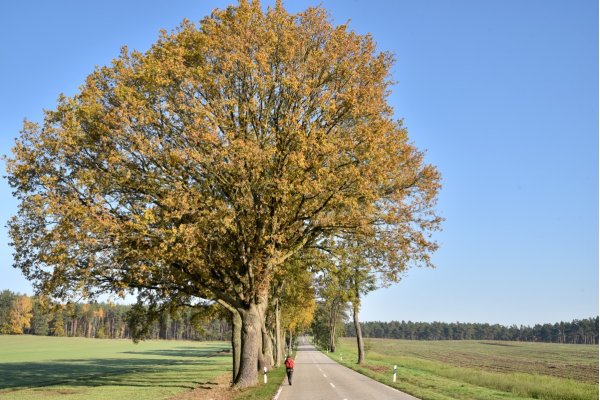
To both sides fields and meadows, to the right the view down to the east into the Havelländische Luch, straight ahead on the left the forest edge of the Hohe Rott a push moraine of the Weichseleiszeit (Weichsel ice age), 1 to 2.5 km wide and 4 km long and up to 92 m long (WEIßE 2003), today mostly wooded. Shortly before the junction to the left up densely standing Robinia at the road.

From the edge of the forest, the view back towards Nennhausen, the avenue along the road in the back light of the November sun, which is at that time of the year always low here so far in northeastern Germany.
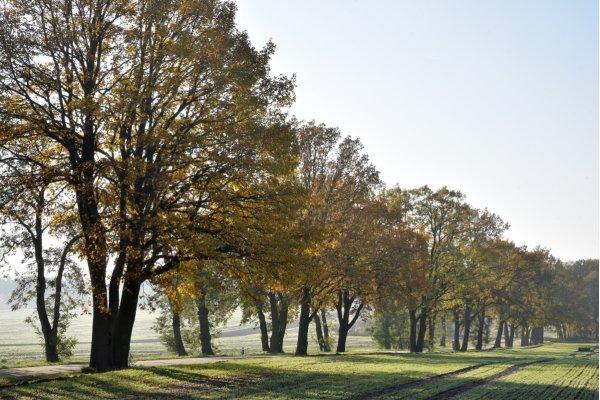
But first, at the edge of the field/forest to the west a little further up, the edge of the forest lined with pines, birches and the first sessile oaks.
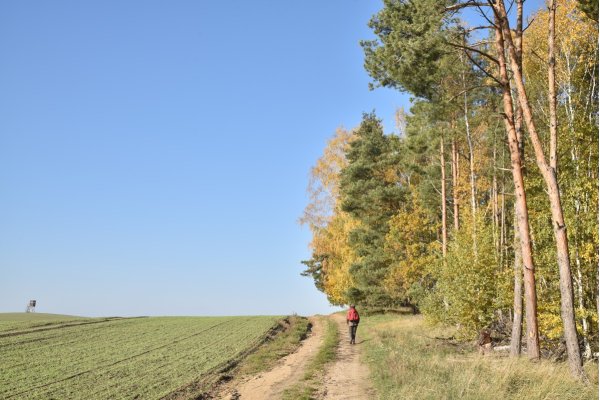
The old oaks of the Hohe Rott
At Jagen 5138 we enter the forest, immediately on the left the first group of sessile oaks (Quercus petraea), almost all from the bottom to two or more stems, the strongest over 6 m circumference, some of the stems erupted in the past, leaving behind cavities and scars. In the last years two of the trunks of one tree have broken away, 170 narrowest annual rings on a radius of 20 cm on a horizontal trunk at a height of 8 m. Other stems stronger.
In 2009 these oaks still stood in a loose pine stand, this one completely cleared westwards after storm break(?), the veterans now partly freestanding, we will see how they will get it.
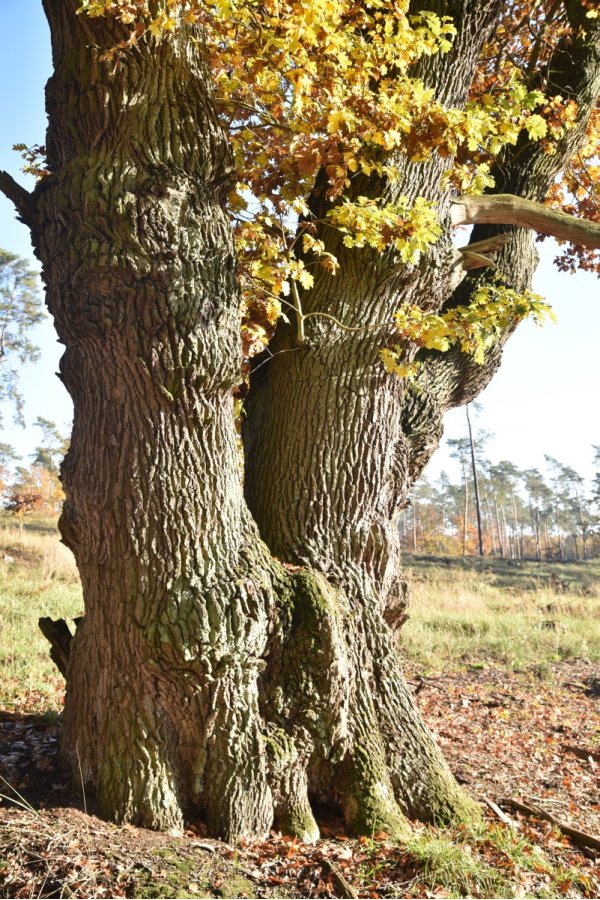
To the northwest further into the light pine stand, the ground densely covered with country ryegrass, with a broad projecting crown an old English oak (Quercus robur). It must have stood freely in the field in former times, now fighting for space and light, measuring its trunk almost five and a half metres in circumference.

We go deeper into the forest until a long avenue of pedunculate oaks crosses from east to west, accompanying the main path over the height.
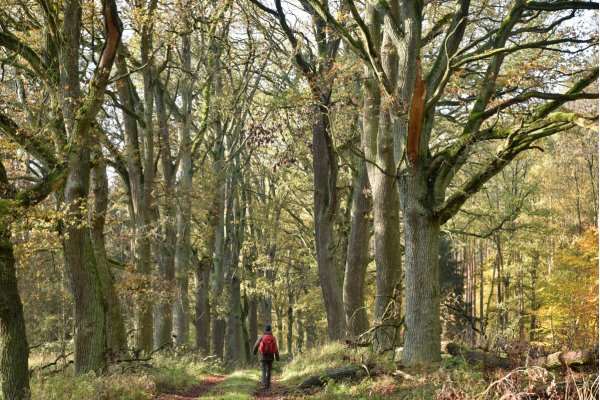
North of the avenue another beautifully grown English oak.
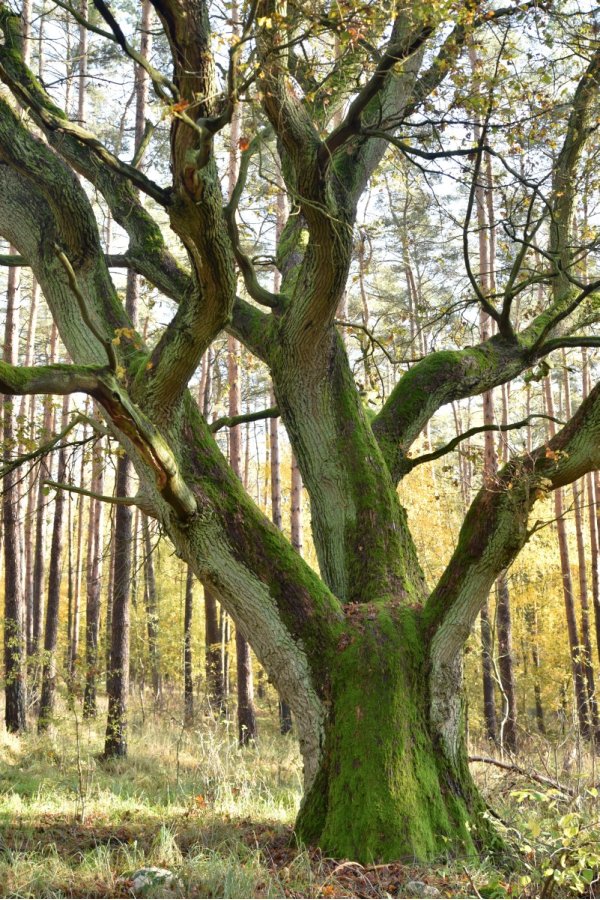
To the south a mighty sessile oak with a high crown typical of the sessile oak. A bow thickens the stem base, dating back to the outbreak of a former deeply set stem. Nevertheless probably originally one trunk, a tree, with today 6.15 m circumference, one of the strongest sessile oaks of Brandenburg.
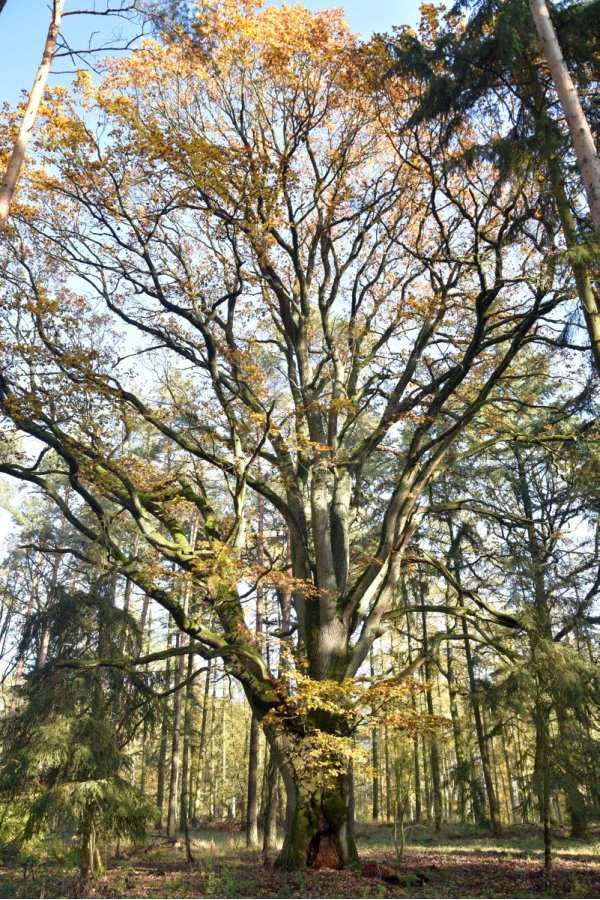
Impressive the autumn yellow shining leaves not only right at the top of the crown but also very close to experience and amazement, at eye level.
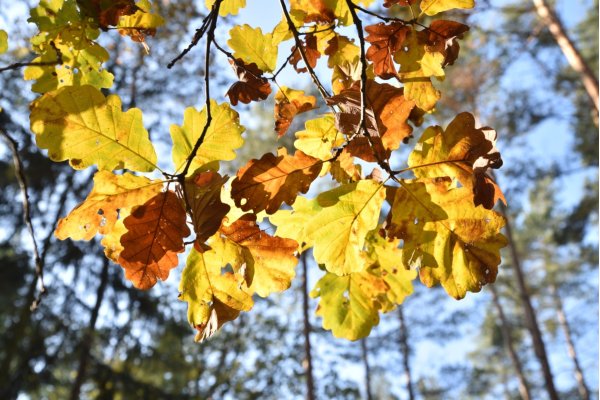
The look up skyward to great and high crown.

In addition to these mighty tree giants, there are also broken, fallen specimens, some of them still alive nack in 2009, the mossy lying trunks of new habitat.

Continue along Eichenallee for a while, then back south towards the edge of the field/forest. To the left, a mighty, particularly broad-crowned sessile oak grows into pole wood. A release is necessary, deeply set branches are already dead.
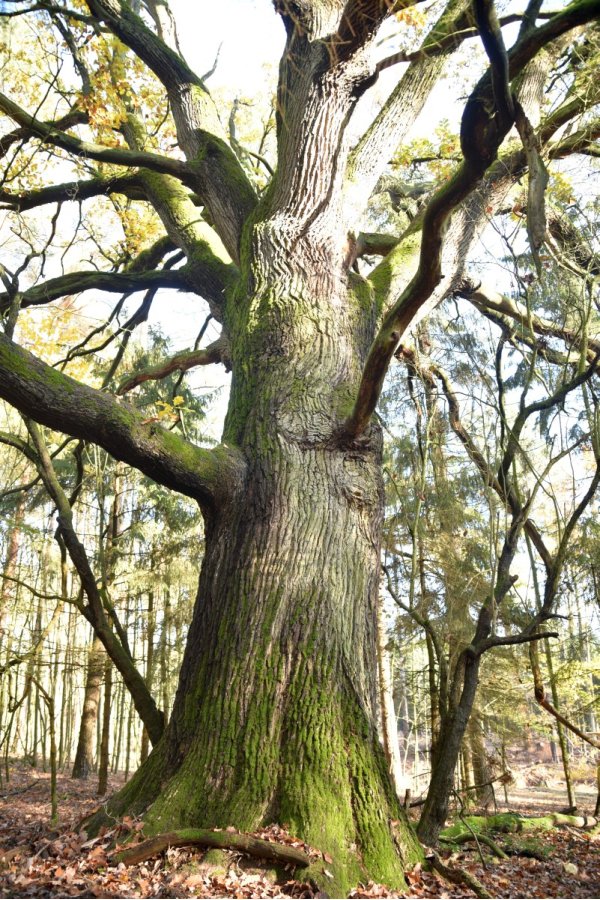
At the edge of the forest again out into the sun and the warmed up air. A bit back a beautiful English oak and another group of sessile oaks, the latter with an impressive bright autumn colour. The strongest of them unfortunately did not survive the drought of the last two years and will probably not sprout again next year. On the other hand, on our tour through the Hohe Rott we repeatedly noticed that the English oaks suffered more from the drought than the neighbouring sessile oaks.

A red oak avenue (Quercus rubra) leads us across the field, down towards Nennhausen.

A short look into the castle park
A short walk along the road to Stechow on the accompanying cycle path follows, but just after entering the village we turn right into the wooded parts of the castle park, on the right a short old avenue of Sessile oaks leads to the castle.
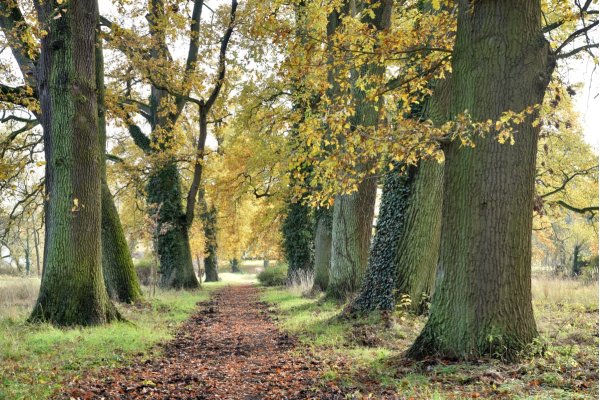
At its end on the right hand side the remains of the mighty Fouque oak. This formerly 8.5 m circumference measuring tree broke off in 2006. You can find more information about this oak and further photos here. Described at FRÖHLICH (1994) we visited this oak for the first time in 1999.
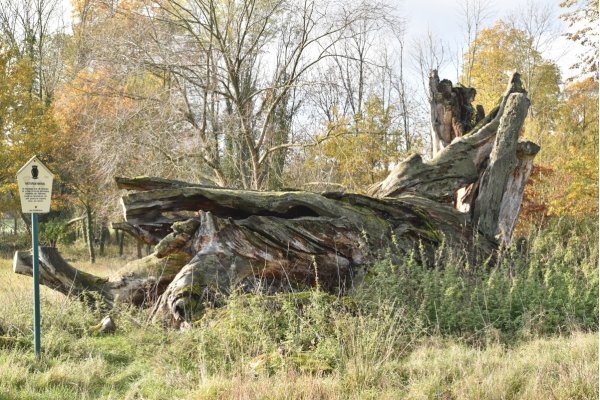
It's a short way from there to the palace. On the pleasureground in front of the palace stands a second large solitary English oak with a circumference of just over 6 metres. You can also find this oak in the East German Tree Archive.
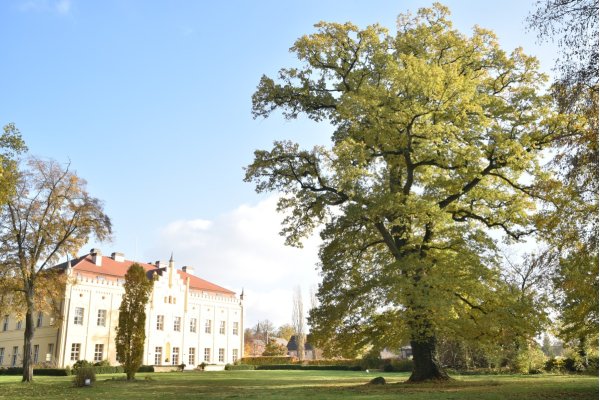
The palace and the park area near the palace are privately owned, the large rest of the park with its old trees (oaks, plane trees, hornbeams, elms) is freely accessible and invites further discoveries. A last autumnal impression from the park and then it goes back to the station and with the regional express back to Berlin.
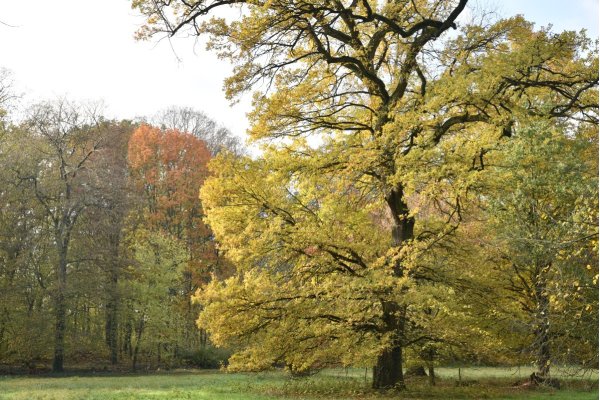
Sources
- Bundesarchiv Koblenz, BArch B 245/256 und 245/257, Survey of the Commission for the Publication of a Botanical Notebook for the Province of Brandenburg - Results
- FRÖHLICH, H.J. (1994): Paths to old trees, Vol. 8 Brandenburg, WDV Wirtschaftsdienst, Frankfurt a. M.
- WEIßE, R. (2003): Contributions to the Weichsel Cold Age morphogenesis of the Elbhavel Angle. Series of publications of the Faculty of Mathematics and Natural Sciences at the University of Potsdam
.
All photos and texts on this site are, unless otherwise expressly noted, protected by copyright. Each publication requires the permission of the author/photographer.
